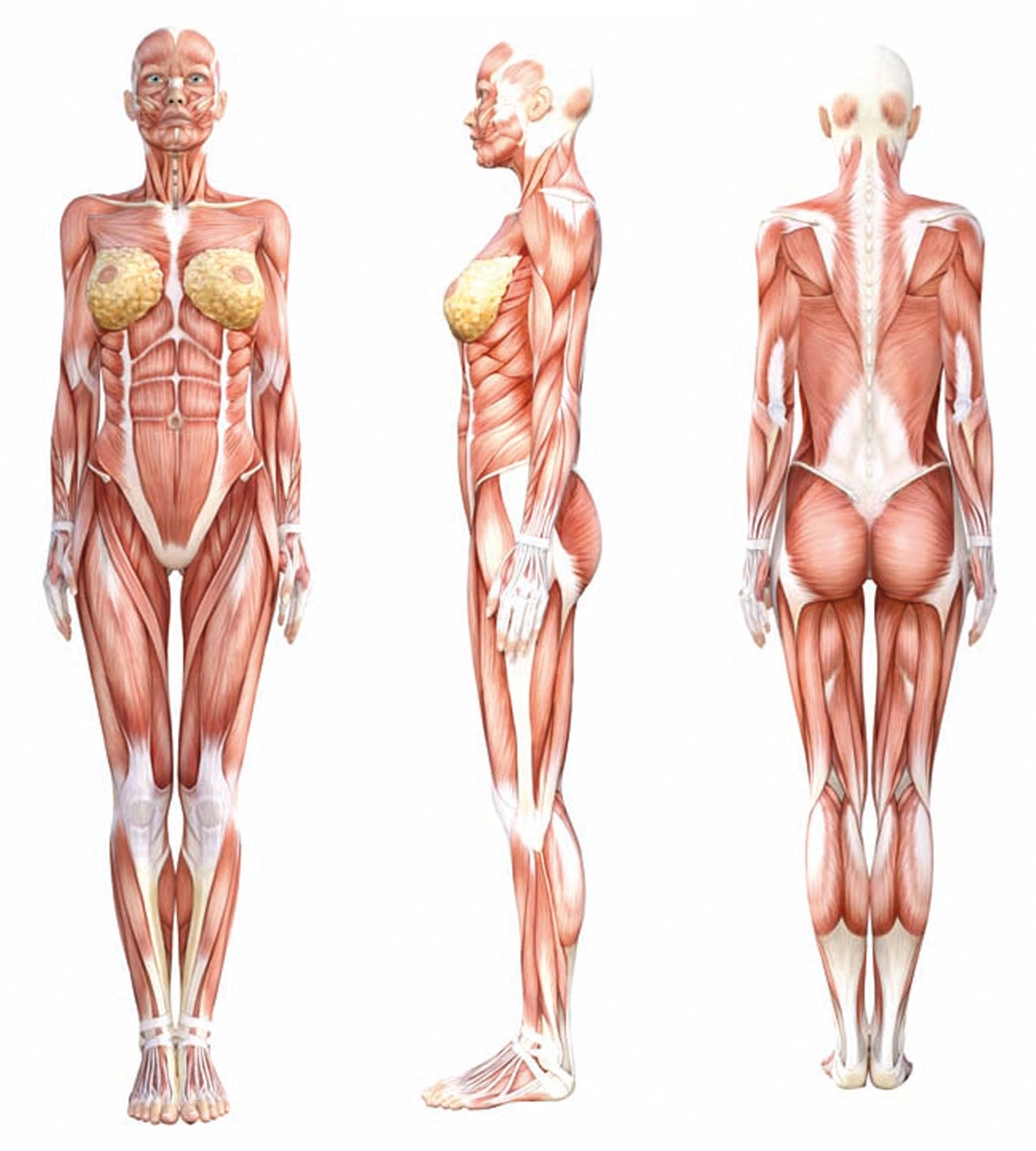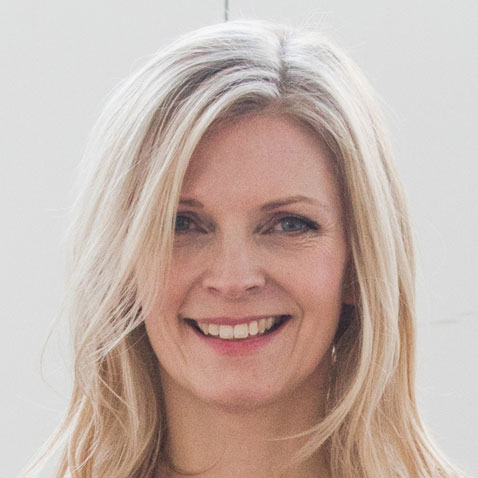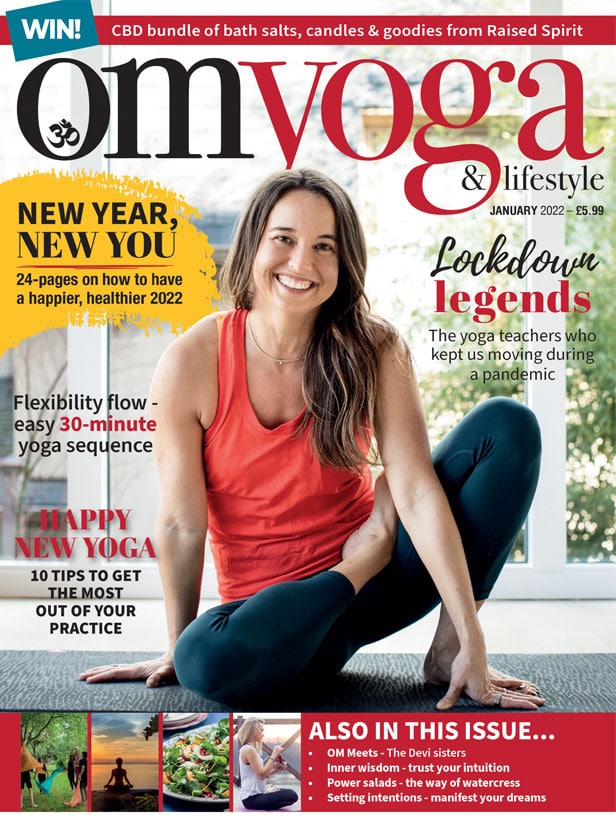
A 360º overview of...
Mountain Pose (Tadasana)
With Dr Kiki Morriss
Mountain Pose is the starting point for our journey exploring the Sun Salutation throughout 2022. Part one of a 12-part series. By Dr Kiki Morriss
Sun Salutation 2022
Happy New Year, and a warm welcome to OM’s anatomy academy. This year I will take you on a journey through the poses that make up the Sun Salutation, which you’ll find in many styles of yoga from Sivananda to Ashtanga and Vinyasa Flow.
Month by month, from January to July, we will look in depth at each one of the foundation poses that create this graceful and familiar sequence. Give yourself the time to properly learn each pose to ensure you stay injury free and maintain a sustainable yoga practice through this year and beyond.
In the latter half of 2022, we will study some poses that can be added to the Sun Salutation sequence to create variety and diversity within the flow.
Whether you are new to yoga or have been practicing for many years, this guide will inform and deepen your practice. I am excited for you to follow along and learn with me through the year.
We’ll start with Mountain Pose, the first and last pose of the Sun Salutation, when the body is perfectly still. As Vanda Scaravelli explains: “This is the most important pose. Do it right and all the others will follow.”
Mountain Pose (Tadasana)
Tada = Mountain
Asana = Posture
Mountain Pose teaches you balance, focus and evenness. Your mind is steady and quiet, while your body is centred, grounded and firm as a rock.
FEET
- Stand with your feet together and facing forwards
- Allow your big toes and the centres of your inner ankles to touch.
- Lift your heels and extend them back, as you lower them down to the ground.
- Lift your toes and stretch them forwards, as you lower them down to the ground.
- Spread your weight evenly across the inner and outer edges of your feet and across the surface of your feet.
- Feel light on your feet, as you lift your arches.
- Relax your arms by your sides and allow them to hang naturally.
- Feel your fingers and thumbs curling naturally.
- Or, bring your hands into prayer position, Namasté, in front of your chest. This is your heart chakra or Anahata. In yoga tradition it is known as the “seat of the soul” and is the centre of love for yourself and others, compassion, empathy and forgiveness. Reflect on the qualities of unconditional love and joy as you hold this pose.
- Observe which direction your palms are facing.
LEGS
UPPER BODY
- Lengthen your tailbone towards the ground to encourage a neutral position for your pelvis and lower back.
- Lift your breastbone, broaden across your collarbones and move your shoulder blades down your back.
- Soften your shoulders away from your ears.
- Engage your quadriceps to straighten your knees.
- Activate the adductor muscles of your inner thighs to draw your femurs (thigh bones) together.
- l Lift your inner and outer ankles and draw your Achilles tendons up.
ARMS
NECK
- Lift upwards through your neck and lengthen the back of your neck.
- Keep your cervical spine in a neutral position.

HEAD
- Centre your head over your legs and lift upwards through the crown of your head.
- Make your head light by lifting the back of your skull away from your neck.
- Hold your head straight with your chin parallel to the ground.
- Soften your jaw and facial muscles.
- Gaze softly straight ahead.
MIND
- Your mental state will influence your posture, so if you are feeling tired, anxious or depressed you will find that you stand in Mountain pose with tense or slumped shoulders and a collapsed chest and spine.
- Conversely the position you create in the pose will influence your mental state. By mindfully softening your shoulders, opening your chest and lengthening through your spine, you will counteract your negative mental state and will begin to feel more energetic, light and positive in mind and body.
REFLECTIONS
- The Sun Salutation is an opportunity to salute the areas of your life that you are grateful for. Take time in Mountain Pose to reflect on what you are grateful for.
- Make an intention at the beginning of your practice, as you stand tall in Mountain Pose, and allow this to carry through to the rest of your day. Some examples of an intention are: May this practice help me to be healthy and happy. May this practice help me to enhance the lives of others. May this practice help me to be more compassionate, forgiving and kind.
INSIGHTS IN MOUNTAIN POSE
- Listen to how your body feels right now.
- What sensations do you observe in the palms of your hands and in the soles of your feet?
- Observe the distractions of your mind. Allow your thoughts to come and go without identifying with them. Keep returning to the practice of observing the rise & fall of your breath.
- Experience peace, harmony and unity.
BENEFITS
- Improves your posture and balance.
- Encourages mind/body connection.
- Establishes your foundation for all yoga poses.
- Develops focus and concentration.






